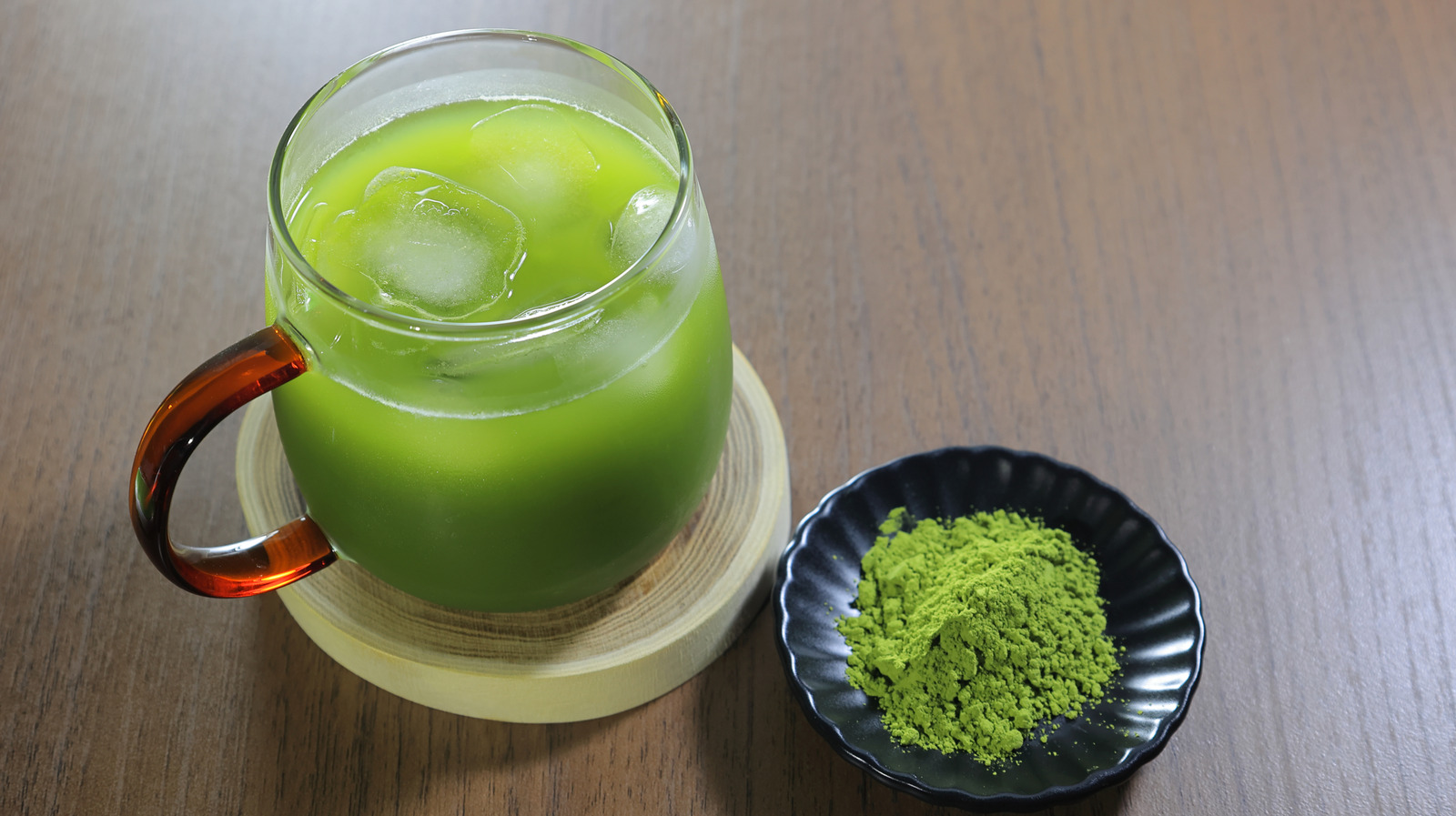If you’ve ever enjoyed a matcha latte, you might be wondering about the origins of its earthy green goodness. It’s also important to note that green tea and matcha have differences, particularly in how each one is grown and processed. Green tea leaves are grown in more sunlight, rolled and pressed into a tube shape and dried to be ready for steeping. On the other hand, matcha is derived from the same Camellia sinensis plant, grown in partial shade, de-stemmed, and ground into powder with an especially fine consistency. Additionally, there are multiple grades of matcha including ceremonial, culinary, and premium (or daily) which vary in terms of each one’s preparation and respective use.
Ceremonial matcha is, as it sounds, intended for ceremonial drinking use, while culinary and premium are more widely available and considerably less expensive than the former. With a range of different applications, you can find the type of matcha that’s right for you. The notably robust and grassy green flavors of matcha taste different depending on the grade, making each one distinct from the other.
Ceremonial
Its oldest name is Chanoyu, which relates not just to the ceremonial grade of the tea, but also to the art and practice of the ceremony itself. Higher quality than the rest and prepared with focus, intention, and aesthetic, ceremonial matcha is worthy of a heftier price tag for the ritualistic aspect that dwells within it. This style of matcha is exceptionally delicate in taste and visibly more green than other types for its increased chlorophyll. Only the youngest first-harvest green tea leaves are hand-picked for this type of matcha and it is stone-ground into powder form, making it ideal for mixing with only water to preserve the flavor.
To prepare ceremonial matcha, you’ll need the right tools. The multi-step process should be undertaken with care and respect as not to rush or hinder the overall experience and flavors. Start by sifting and measuring your matcha before using a tea scoop known as a chashaku to add one teaspoon to the tea bowl, or chawan. After boiling water, let it cool to 165 degrees Fahrenheit before pouring approximately two ounces over the matcha. Then, using a bamboo whisk known as a chasen, vigorously stir it up. Try making an “M” shape as you whisk and let the tea properly aerate until it creates a foam on the surface. From there, it is ready to serve and enjoy.
Culinary
There are so many unexpected ways to use matcha in your daily cooking and culinary grade matcha is tailor-made for it. This version is made using older tea leaves, giving it a more yellow to bright green appearance. It also differs from the vibrantly green ceremonial grade matcha in that it has a slightly less sweet taste. Bearing a more bitter earthy flavor, this matcha is perfect for use in dishes where it can combine with other elements to enhance the overall flavor.
Culinary grade matcha can effortlessly complement all types of dishes from savory to sweet and everything in between. For sweets, try matcha muffins, cookies, or truffles. You can mix a bit of matcha into frosting to cut some of the sweetness and add a delightful bit of earthy green flavor to cupcakes and layer cakes. You can also add matcha to savory dishes like pesto for pasta, green goddess dressing, and even your favorite soup recipes. For snacks, culinary matcha powder makes a great coating when sprinkled on popcorn, roasted nuts, or mixed with salt as its own dynamic duo of seasoning. Try a little bit to dress up your favorite dishes with a dash of greenery.
Daily
Circling back to your favorite regular beverage, premium grade matcha –- sometimes known as daily grade –- is the midpoint between culinary and ceremonial grade in terms of taste and application, making it the best choice for regular consumption. Whereas ceremonial is intended for special occasions and culinary is intended to be mixed in with several other ingredients, a simple DIY matcha latte recipe requires only matcha powder, boiling water, and the milk and sweetener of your choosing. Premium grade is slightly less sweet than ceremonial matcha while lacking the intense bitterness of culinary grade, giving it a bold and palatable taste, particularly when mixed with milk and sweeteners.
To make a matcha latte you can enjoy on the regular, start with one half to one teaspoon of premium grade matcha and sift it first to remove any lumps. Add it to a mug with a quarter cup of hot water and whisk it thoroughly in a similar manner as the “M” shape when preparing ceremonial matcha. Finally, add your preferred type of milk and sweetener before mixing everything together until it is fully combined and ready to drink. For a cold version, simply pour the cooled mixture over a glass of ice. You can also use a milk frother to foam up your milk prior to adding it to your latte for a more unique texture.








